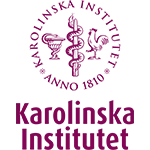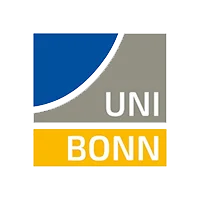Explore the credit course catalogue
21 Results

The course is designed to provide students and researchers with a solid understanding of functional Near-Infrared Spectroscopy (fNIRS) as a relatively new tool to measure brain activity and will emphasize both theoretical knowledge and practical skills of fNIRS. The students will gain expertise in the underlying principles of fNIRS, its instrumentation, and various analytical approaches. The primary goal is to empower students with the knowledge of this additional neuroimaging tool to design and execute advanced experiments, interpret fNIRS data effectively, and contribute to cutting-edge research in neuroscience and related fields.
The course overlaps with the course Imaging in neuroscience: with a focus on fNIRS, offered at Karolinska Institute and The Swedish School of Sport and Health Sciences (GIH). The sessions will be a mix of in person and virtual meetings with practical sessions held at uMOVE - Gävlegatan 55, Solna and at the BMC-lab at GIH – Lidingövägen 1, Stockholm

This seminar focuses on the increasing importance of Artificial Intelligence (AI) in academic research and writing, providing practical insights into AI technologies; use in these areas.The workshop explores ChatGPT and prompt engineering, as well as other academic AI tools to aid research and writing, examining both benefits and challenges. Ethical aspects, such as copyright and authenticity of research results, are discussed, with the goal of equipping participants with practical knowledge and skills to effectively utilize AI in daily research through interactive elements like case studies and group discussions.

The course is designed to provide students and researchers with a solid understanding of functional Near-Infrared Spectroscopy (fNIRS) as a relatively new tool to measure brain activity and will emphasize both theoretical knowledge and practical skills of fNIRS. The students will gain expertise in the underlying principles of fNIRS, its instrumentation, and various analytical approaches. The primary goal is to empower students with the knowledge of this additional neuroimaging tool to design and execute advanced experiments, interpret fNIRS data effectively, and contribute to cutting-edge research in neuroscience and related fields.

The main purpose of the course is to provide the students with a solid understanding of the tools available to analyze brain structural data measured with structural magnetic resonance imaging (sMRI). The students will develop the ability to critically review results provided by different methods, to select the most adequate tools and experimental designs to answer different questions and to compare their relative advantages.

Topics covered include:
- Basics of monolayer glioblastoma cell culturing
- Generation and culturing of human glioblastoma organoids
- Immunochemistry, Western Blot, DNA/RNA isolation
- Flow cytometry analysis of cell death and cell viability assays
- Live-cell imaging and morphology analysis
- Data analysis including statistics using ImageJ, FlowJo, GraphPad PRISM
- Visualization of results using Microsoft Excel/Powerpoint or Adobe illustrator

Topics coverd include:
- Vascular Biology and organotypic properties
- How to investigate blood vessels in the CNS
- Isolation of blood vessels and endothelial cells from the mouse CNS
- Endothelial cell tube formation assay
- Co-culture of endothelial cells and pericytes in 3D
- In vitro blood brain barrier assay

Topics covered include:
- Coding: theory, practical training, coding styles, unit testing
- Collaborative software development workflows
- Data analytics workflows
- (Generalised) linear mixed effects models
- Bayesian statistics
- Data visualisation
- Workflow automation
- Meta-science

Topics covered include:
- Deep brain imaging using single- and two-photon imaging techniques
- Miniature microscope recordings in freely moving animals
- Combined all-optical imaging and optogenetic tools
- Large scale neural population analysis using data science and machine learning techniques
- Behavioural phenotyping using markerless pose estimation
- Scientific programming using Python

Topics covered include:
- Cellular resolution fluorescent in vivo imaging (mouse model)
- Histological analysis of post-encephalitic brain tissue changes
- Field electrophysiology (in vivo, in vitro)
- Patch-clamp cellular recordings (in vitro)
- Targeted light-based circuit interference, light-activated antiepileptic drugs

This module is dedicated to understanding and investigating how small molecular modulators can be used to specifically target prominent metabolic pathways using the mouse as an experimental animal model. Attendees will be introduced to murine animal handling, murine primary adipocyte isolation and in vivo, ex vivo and in vitro pharmacological experimentation with the model system. The practical work will be supported by institute seminars covering, among other, signal transduction metabolism and pharmacology.

The lab-based practical part of the course will cover methods used to tackle questions in the research area outlined above, such as cell culture, microscopy, tissue dissociation and processing of tissue samples, MACS and FACS-based cell analysis and separation, cell transfection, cell genome engineering, transgene expression, cellular
assays, protein and gene expression analyses etc. In addition to the practical part, students will attend lectures and seminars.

Topics covered include:
- Basic protein-biochemical methods (protein-protein interactions, Western Blotting
- Processing of human samples for protein detection
- Basic cloning techniques and CRISPR
- Cell culture work with primary cells and cell lines

Topics covered include:
- Diversity of neuronal cell types and approaches to cell type classification
- Experimental design to dissect the functional contribution of diverse neuronal cell types to behaviour
- Stereotaxic surgeries and cell type-specific targeting with viral vectors in transgenic mice
- Deep-brain imaging at the single-cell level using miniature microscopes in freely-moving mice and 2-photon recordings in head-fixed animals
- All-optical interrogation of neural circuits with combined imaging and optogenetic approaches
- Introduction to analysis of deep-brain imaging data

Topics include:
- Free swimming and restrained behavioural recording
- Multiphoton neuronal population imaging
- 3D electron microscopy preparation and collection
- Time series analysis and machine learning-based image segmentation

Topics covered include:
- Handling of adult and larvae zebrafish. Manual Morpholino® (MO) injections into fertilized fish eggs
- Fluorescent in vivo microscopy of transgenic larvae zebrafish
- Different screenings (behavior/development/expression)
- Documentation and analysis of treated fish larvae (≤ 5 dpf) and their controls

This course covers structural analysis of the hypothalamic visual relay system across actinoptrygian fishes.

Participants receive basic and advanced knowledge of neurophysiology and information about relevant methods (e.g. evoked potentials, extra- / intracellular, patch clamp recordings). Properties of ion channels as well as cellular and network
properties of selected model systems (leech, goldfish, hippocampus) will be discussed.

This course is a basic course on advanced fluorescence microscopy imaging and correlation spectroscopy techniques for quantitative characterization of molecular transport and interactions in live cells. The purpose of the course is to give an introduction of the underlying physicochemical principles, hands-on training and an overview of applications of these specialized techniques in biomedical research. At the end of the course, the student will have hands-on experience with live-cell imaging and specialized fluorescence microscopy and correlation spectroscopy techniques. The course is suitable for doctoral students lacking training in mathematics, physics, or optical engineering who want to apply these techniques in their research.

The course reviews central concepts and topical research in stress, sleep and health. In particular, it is focused on how acute stress, chronic stress, diurnal rhythm and sleep problems affect and interact physiological systems such as the immune system, the endocrine system, cognitive processes and possible consequences for health. The course encompasses neuroscientific and other biological perspectives, and describes interventions to improve stress- and sleep related symptoms. Theoretical models and methods to understand and study stress- and sleep related processes will be applied.
The course will be provided fully online, partly via Zoom but also taking advantage of recent digital tools such as Gather; and using Canvas as the learning platform in-between in-class sessions.

Our MATLAB-based comprehensive course is designed to equip you with the essential knowledge and practical skills to delve into biomedical image processing, specifically tailored for biological/medical and neuroimaging applications using MATLAB.
Selection will be based on:
1) the relevance of the course syllabus for the applicant's doctoral project (according to written motivation),
2) start date of doctoral studies (priority given to earlier start date)

The course provides a deeper understanding of neurodegenerative disorders from a basic to a clinical perspective. It consist of a combination of lectures, lab demonstrations and group dicussions led by experts in the field. It covers cellular and molecular pathophysiological mechanisms of neurodegenerative disorders and the mechanisms of current and/or possible future treatments. We will discuss similarities and differences between the different neurodegenerative diseases. The students will also be introduced to some powerful techniques that can be used for studying neurodegeneration, subcellular localization, and omics approaches. We will discuss advantages and drawbacks of important methods and models for studying mechanisms behind neurodegenerative disorders
SELECTION
Selection will be based on:
1) the relevance of the course syllabus for the applicant’s doctoral project (according to written motivation).
2) start date of doctoral studies (priority given to earlier start date).


